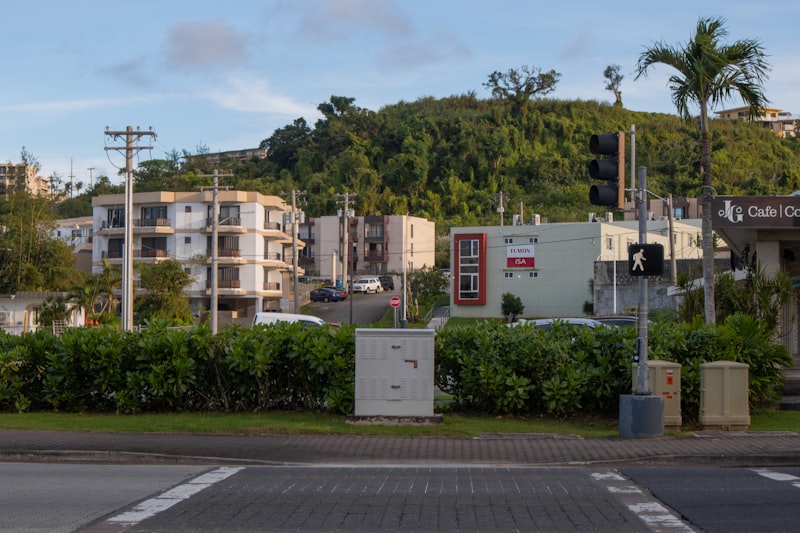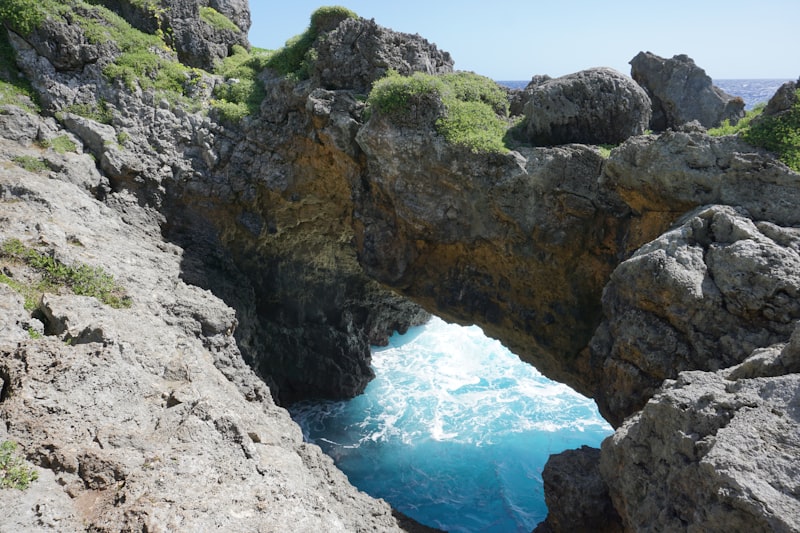Have you ever wondered where Guam is located? Well, you’re in the right place! Let’s dive into the details and discover the answer to the intriguing question: “Guam, in which country?”
Situated in the western Pacific Ocean, Guam is an enchanting island territory that belongs to the United States. Despite being a small island in size, Guam possesses immense cultural and strategic significance.
As an unincorporated territory of the United States, Guam functions as an integral part of the country while maintaining its own distinct identity. It is one of the few places outside the continental United States where American citizens can reside.
Nestled between the Philippine Sea and the North Pacific Ocean, Guam is part of Micronesia, a region comprising thousands of islands. Its location makes it an ideal destination for tourists looking to explore the captivating beauty of the Western Pacific.
What makes Guam even more fascinating is its unique blend of cultures. The indigenous Chamorro people have inhabited the island for thousands of years, preserving their rich heritage and traditions. Additionally, due to its strategic position, Guam has been influenced by various cultures throughout history, including Spanish, Japanese, and American.

Guam offers an array of attractions that cater to diverse interests. From pristine beaches with turquoise waters to lush jungles teeming with wildlife, nature enthusiasts will find themselves in awe. For those seeking adventure, activities like snorkeling, scuba diving, and hiking are abundant. Explore the verdant landscapes or immerse yourself in the vibrant underwater world—there’s something for everyone!
Moreover, Guam boasts a modern infrastructure that caters to visitors from around the globe. Luxurious resorts, world-class shopping centers, and a thriving culinary scene make Guam an enticing destination for travelers seeking comfort and indulgence.
Guam is a captivating island territory nestled in the western Pacific Ocean. As part of the United States, it combines American influences with its own unique Chamorro culture. Whether you’re seeking a tropical getaway or a cultural immersion, Guam offers an enchanting experience that will leave you with lasting memories.
Decades-Long Dispute Resolved: Guam Officially Recognized as an Unincorporated Territory of the United States
Guam, a small island in the Pacific Ocean, has finally reached a resolution in its decades-long dispute. It has been officially recognized as an unincorporated territory of the United States. This decision marks a significant milestone for the people of Guam and brings an end to years of uncertainty and legal battles.
For many years, the status of Guam has been a subject of debate and contention. Some argued that Guam should be granted full statehood, while others believed it should become an independent nation. However, after careful consideration and deliberation, it has been determined that Guam will retain its current designation as an unincorporated territory.
Being an unincorporated territory means that Guam remains under the sovereignty of the United States, but with a certain degree of self-governance. The residents of Guam are U.S. citizens, and they are entitled to many of the same rights and privileges as those living in the fifty states. However, Guam does not have voting representation in Congress, and its political status is subject to the laws and policies of the United States.

This resolution brings both benefits and challenges for the people of Guam. On one hand, being officially recognized as an unincorporated territory provides a sense of stability and security. It ensures continued access to federal funding and assistance, which is crucial for the island’s economic development and infrastructure improvement.
On the other hand, Guam still faces certain limitations and constraints as an unincorporated territory. The lack of voting representation in Congress means that the people of Guam do not have a direct voice in shaping national policies that affect them. Additionally, there are ongoing discussions about the full integration of Guam into the United States, including the possibility of granting the island statehood or allowing it to become an independent nation.
The long-standing dispute over Guam’s political status has finally come to an end. The decision to recognize Guam as an unincorporated territory of the United States brings both benefits and challenges for the island and its residents. While it provides stability and access to federal resources, it also highlights the need for further discussions on Guam’s political future.
Geopolitical Tug-of-War: Guam’s Strategic Importance Puts it at the Center of International Attention
Have you ever wondered how a small island in the Pacific Ocean has become a focal point of international attention? Welcome to Guam, a paradise with strategic significance that goes beyond its white sandy beaches and turquoise waters. In this article, we’ll delve into the geopolitical tug-of-war surrounding Guam and explore why it holds such immense importance on the world stage.
Located in the western Pacific, Guam is an unincorporated territory of the United States. Its unique position makes it a vital hub for military operations, trade, and diplomacy. Strategically positioned between the Asian and American continents, Guam serves as a gateway to the Asia-Pacific region, making it a sought-after location for global powers.
One of the key factors contributing to Guam’s strategic relevance is its military presence. The island hosts several U.S. military installations, including Andersen Air Force Base and Naval Base Guam. These bases enable rapid deployment of forces and provide a forward operating platform for projecting power in the region. With tensions rising over territorial disputes in the South China Sea and the Korean Peninsula, Guam’s proximity to these hotspots further amplifies its significance.
Besides its military importance, Guam serves as an essential economic center. Its status as a U.S. territory allows for duty-free access to the American market, attracting businesses and investors from around the world. Tourism also plays a significant role in Guam’s economy, with visitors drawn to its stunning landscapes and vibrant culture. The island’s allure as a tropical getaway intertwines with its geopolitical significance, creating a fascinating blend of leisure and power dynamics.
Guam’s strategic location has not escaped the attention of neighboring countries. China, Japan, and South Korea, among others, closely monitor developments on the island, aware of its potential implications for regional stability. This has led to a delicate balancing act for Guam, as it navigates complex diplomatic relationships while safeguarding its own interests.
Guam’s strategic importance places it at the center of international attention. Its unique position as a military stronghold and economic gateway make it an indispensable player in the geopolitical landscape of the Asia-Pacific region. As tensions ebb and flow, Guam continues to be a testament to the intricate web of power dynamics that shape our world today.
Unexpected Twist: Guam’s Unique Political Status Challenges Traditional Notions of Sovereignty
Have you ever heard of a tropical paradise that challenges the conventional understanding of sovereignty? Well, let me introduce you to Guam, a small but captivating island in the western Pacific Ocean. Nestled in the Marianas archipelago, Guam boasts breathtaking landscapes, warm hospitality, and a political status that defies expectations.
When we think of sovereignty, we usually associate it with independent nations exercising complete control over their affairs. However, Guam presents an unexpected twist to this notion. Despite being an unincorporated territory of the United States, Guam is not a state, nor is it fully autonomous. Instead, it enjoys a unique political status that raises intriguing questions about sovereignty.
Guam’s status as an unincorporated territory means that while it is under U.S. sovereignty, it does not possess the same degree of self-governance as a state. The people of Guam are U.S. citizens, and they elect their own governor and legislature. Nevertheless, key decisions, such as defense and foreign policy matters, remain under federal control, leaving some Guamanians feeling a sense of limited sovereignty.
This complex situation has led to ongoing debates about Guam’s political future. Some residents advocate for statehood, arguing that it would grant them full representation in Congress and a greater say in national affairs. Others prefer maintaining the current status, known as an “enhanced commonwealth,” which could provide more self-governance while preserving the island’s ties to the United States.
Beyond the political implications, Guam’s unique status has tangible effects on its economy and culture. Its connection to the U.S. grants certain benefits, such as access to federal funding and programs. However, it also exposes Guam to the challenges of being a small, distant island in a global context, leading to distinct economic and social dynamics.
Guam’s exceptional political status challenges our conventional understanding of sovereignty. This enchanting island, with its stunning natural beauty and warm community, invites us to question the traditional boundaries of nationhood and explore alternative models of governance. Whether Guam will continue on its current path or embark on a new journey towards statehood, only time will tell. But one thing is for sure: Guam’s remarkable story keeps us captivated, reminding us that surprises can arise even in the realm of politics and sovereignty.
The Pacific Pivot: Guam Emerges as a Key Player in US Foreign Policy
Have you ever wondered about the shifting dynamics of US foreign policy in the Asia-Pacific region? Well, let’s take a closer look at Guam and how it has emerged as a key player in this strategic shift.
In recent years, the United States has been undergoing a significant pivot towards the Pacific region, with a renewed focus on bolstering its presence and influence. As part of this pivot, Guam, an unincorporated territory of the US in the Western Pacific, has gained prominence as a crucial hub for American military operations and diplomatic initiatives.
Guam’s strategic location in the Pacific Ocean has made it an ideal base for projecting American power and maintaining stability in the region. Situated approximately 2,500 miles southwest of Hawaii, Guam is within close proximity to several important countries, including China, Japan, South Korea, and the Philippines. This proximity allows the US to rapidly respond to any potential threats or crises that may arise in the region.
The island of Guam is home to Andersen Air Force Base and Naval Base Guam, both of which serve as critical military installations for the US. These bases house various assets, including bombers, fighter jets, submarines, and aircraft carriers, enabling the US to conduct a wide range of military operations, from surveillance and deterrence to humanitarian assistance and disaster relief.
Beyond its military significance, Guam also plays a vital role in US diplomatic efforts in the Asia-Pacific region. It serves as a platform for high-level meetings and discussions between American officials and their counterparts from regional allies and partners. Additionally, Guam frequently hosts joint military exercises and training events, fostering greater cooperation and interoperability among participating nations.
Furthermore, Guam’s growing importance has led to increased economic opportunities for the island and its residents. The influx of military personnel and government investments has stimulated the local economy, creating jobs and driving infrastructure development. The tourism sector has also benefited, with visitors drawn to Guam’s beautiful beaches, rich culture, and historical sites.
Guam has emerged as a key player in US foreign policy due to its strategic location, military significance, diplomatic role, and economic potential. As the United States continues to pivot towards the Pacific, Guam’s prominence is likely to increase even further, making it an important focal point for American engagement in the region.